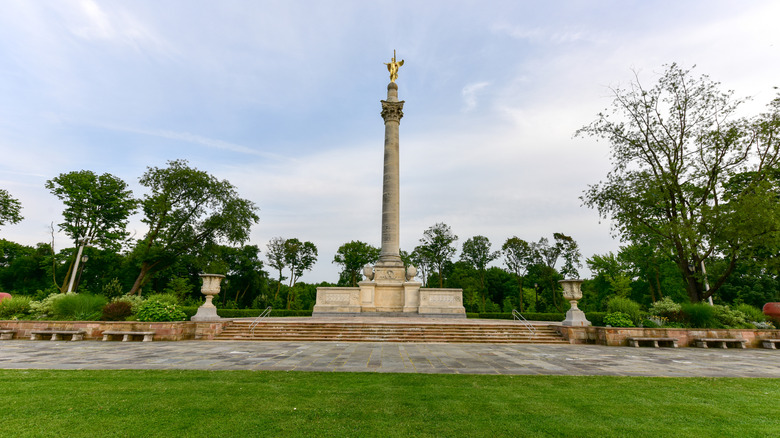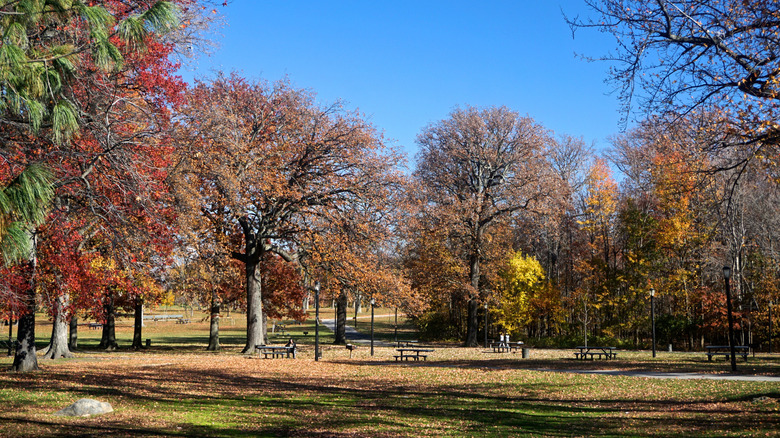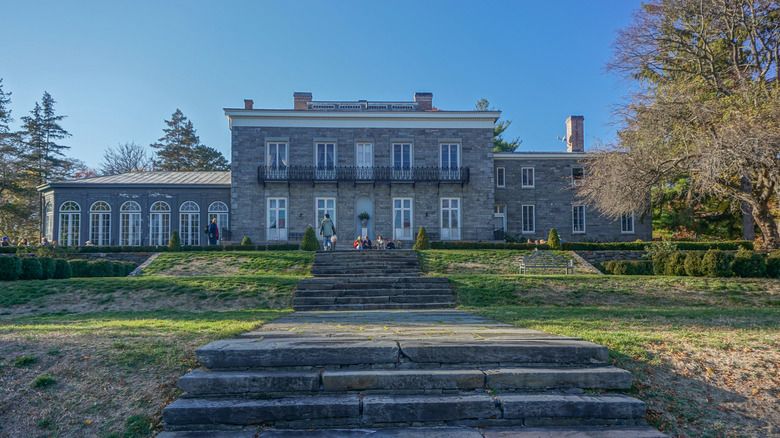New York City's Largest Park Hides On A Wildly Underrated Stretch Of Serene Coast For Outdoor Recreation
The Bronx doesn't always get the same tourist buzz as Manhattan or Brooklyn, but that's part of its charm. This borough is full of local highlights that feel worlds away from the hectic pace of downtown. It's home to New York's thriving "real Little Italy," where you'll find some of the city's best Italian food, and the Bronx Museum of the Arts, one of New York City's most iconic free-to-visit museums. But what might surprise you most is the Bronx's outdoor appeal — something that's harder to come by in a city of towering skyscrapers. The borough boasts New York's largest park, Pelham Bay Park, a sprawling green space with its own islands, wildlife sanctuary, and beach, to name just a few things that make it so special.
At over 2,770 acres — more than triple the size of Central Park — Pelham Bay Park is a world of its own. There are miles of hiking trails, a 19th-century mansion-turned-museum, and even a 36-hole golf course. The park's coastline along the Long Island Sound offers plenty of places to relax by the water, from quiet inlets to a mile-long sandy beach. Getting there is easier than you'd expect: The 6 train to Pelham Bay Park Station brings you right to the park's entrance, just around an hour from Grand Central in Midtown Manhattan. From John F. Kennedy International Airport, the park is under a 40-minute drive. Whether you're looking for a nature escape, a history fix, or just a beautiful place to spend the day, Pelham Bay Park has it all.
Abundant outdoor activities at Pelham Bay Park
Originally made up of private estates and wetlands, Pelham Bay Park was designated in 1888 and gradually transformed into its current diverse landscape. Rolling meadows, marshes, forests, and shores make it one of the best places in New York to truly get lost in nature. While Central Park may be America's best tourist attraction, Pelham Bay Park has the most room for exploration and play. Its trails wind through the park's scenic areas, like the Siwanoy Trail, which is 1.8 miles along a route similar to one used by the Indigenous Siwanoy people for trade. Meanwhile, the two loops of Kazimiroff Nature Trail take hikers through the wetlands and along the Orchard Beach shoreline on Hunter Island.
Orchard Beach, once dubbed the "Riviera of New York City," stretches for over a mile along the Long Island Sound. Designed in 1937, its bathhouse pavilion still stands as a beautiful relic of the past. While the pavilion is no longer in use, it's worth admiring as you relax on the beach or stroll the promenade. The beach offers snack bars, picnic areas, and playgrounds, making it a great destination for families and a quieter alternative to Coney Island.
Sports lovers will find plenty to do here. The golf facility features two courses — Pelham, perfect for beginners, and Split Rock, a more challenging, hilly course. The Greek Revival clubhouse adds a historic touch to a day on the green. Meanwhile, the family-friendly Turtle Cove Golf Center has a mini-golf course. The park also has basketball courts, baseball fields, and even a bocce court. Water enthusiasts can launch a kayak or canoe at the northwest point of the Orchard Beach parking lot for a paddle through the park's lagoon.
Pelham Bay Park's historic landmarks and hidden wildlife
Pelham Bay Park isn't just about outdoor adventure — it's also home to one of New York's most well-preserved historic sites: The Bartow-Pell Mansion. Built in 1842 as part of the Bartow estate, this Greek Revival masterpiece later became city property and is now a museum. Inside, visitors can explore period rooms, including one that holds the writing desk of the third vice president of the United States and founding father, Aaron Burr. A grand spiral staircase and an elegant garden with a reflecting pool add to the mansion's timeless charm. The estate's Carriage House, cleverly designed to appear smaller from the front than it actually is, is another architectural highlight. The mansion and Carriage House are open for exploring on Wednesdays, Saturdays, and Sundays from noon to 4 p.m., with admission at $15 per adult.
The park protects an essential natural treasure: the Thomas Pell Wildlife Sanctuary. This area, once proposed as a waste disposal site, was saved by community activism and is now a flourishing ecosystem of salt marshes and forests. Salt marshes are among the city's most valuable natural habitats, supporting a wide range of wildlife. The 1.5-mile Split Rock Trail takes visitors through the sanctuary, where you might spot egrets, hawks, raccoons, and even the occasional coyote.


